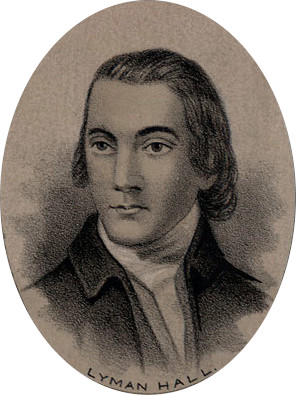|
Ulmus Parvifolia 'Burgundy'
The Chinese Elm cultivar ''Ulmus parvifolia'' 'Burgundy' was selected for its autumn foliage by Dr Michael Dirr and A. E. Richards from a tree on the University of Georgia campus, and first described in 1990. Description The tree rarely exceeds 6 m in height, and has a broad, rounded form. The leaves are relatively large, dark-green, turning a deep burgundy in autumn. The exfoliating mottled bark is a rich orange-brown. Pests and diseases The species and its cultivars are highly resistant, but not immune, to Dutch elm disease, and completely unaffected by the Elm Leaf Beetle ''Xanthogaleruca luteola''. Cultivation 'Burgundy' is not known to be in cultivation beyond North America. Etymology Named for the colour of its autumn foliage. Accessions North America *Dawes Arboretum, Newark, Ohio, US. 1 tree, accession number 2005-0128.002. *Scott Arboretum, US. Acc. no. 2003-261 * U S National Arboretumbr> Washington, D.C. Washington, D.C., formally the District of Col ... [...More Info...] [...Related Items...] OR: [Wikipedia] [Google] [Baidu] |
Ulmus Parvifolia
''Ulmus parvifolia'', commonly known as the Chinese elm or lacebark elm, is a species native to eastern Asia, including China, India, Japan, Korea, Vietnam,Fu, L., Xin, Y. & Whittemore, A. (2002)Ulmaceae in Wu, Z. & Raven, P. (eds) ''Flora of China'', Vol. 5 (Ulmaceae through Basellaceae). Science Press, Beijing, and Missouri Botanical Garden Press, St. Louis, USA; also available as Siberia, and Kazakhstan. It has been described as "one of the most splendid elms, having the poise of a graceful ''Nothofagus''".''Hilliers' Manual of Trees & Shrubs'', 4th edition, 1977, David & Charles, Newton Abbot, England Description A small to medium deciduous or semideciduous (rarely semievergreen) tree, it grows to tall and wide, with a slender trunk and crown. The leathery, lustrous green, single-toothed leaves are small, 2–5 cm long by 1–3 cm broad, and often are retained as late as December or even January in Europe and North America. In some years, the leaves take on a pu ... [...More Info...] [...Related Items...] OR: [Wikipedia] [Google] [Baidu] |
Cultivar
A cultivar is a kind of Horticulture, cultivated plant that people have selected for desired phenotypic trait, traits and which retains those traits when Plant propagation, propagated. Methods used to propagate cultivars include division, root and stem cuttings, offsets, grafting, micropropagation, tissue culture, or carefully controlled seed production. Most cultivars arise from deliberate human genetic engineering, manipulation, but some originate from wild plants that have distinctive characteristics. Cultivar names are chosen according to rules of the International Code of Nomenclature for Cultivated Plants (ICNCP), and not all cultivated plants qualify as cultivars. Horticulturists generally believe the word ''cultivar''''Cultivar'' () has two meanings, as explained in ''#Formal definition, Formal definition'': it is a classification category and a taxonomic unit within the category. When referring to a taxon, the word does not apply to an individual plant but to all plants t ... [...More Info...] [...Related Items...] OR: [Wikipedia] [Google] [Baidu] |
Michael Dirr
Michael A. Dirr is an American horticulturist and a professor of horticulture at the University of Georgia. He is an expert on woody plants. Education and experience Dirr earned a Bachelors in Science degree in Plant Physiology and a Masters in Science degree in Plant Physiology from Ohio State University and a Ph.D in Plant Physiology from the University of Massachusetts Amherst, in 1972. Upon graduation from the University of Massachusetts, Dirr was an Assistant Professor of Ornamental Horticulture at the University of Illinois, Urbana, where he continued to work until 1978. He then became a Mercer Fellow at the Arnold Arboretum of Harvard University through 1979. In 1979, he became the Director of the University of Georgia Botanical Garden. In 1981, he returned to teach at the University of Georgia and was promoted to Professor in 1984. Dirr's Georgia Plant Introduction Program has introduced over 40 new cultivars into the nursery trades. Michael Dirr retired from the Univer ... [...More Info...] [...Related Items...] OR: [Wikipedia] [Google] [Baidu] |
University Of Georgia
The University of Georgia (UGA or Georgia) is a Public university, public Land-grant university, land-grant research university with its main campus in Athens, Georgia, United States. Chartered in 1785, it is the oldest public university in the United States. It is the flagship university, flagship school of the University System of Georgia. In addition to the main campuses in Athens with their approximately 470 buildings, the university has two smaller campuses located in Tifton, Georgia, Tifton and Griffin, Georgia, Griffin. The university has two satellite campuses located in Atlanta, Georgia, Atlanta and Lawrenceville, Georgia, Lawrenceville, and residential and educational centers in Washington, D.C., at Trinity College, Oxford, Trinity College of University of Oxford, Oxford University, and in Cortona, Italy. The total acreage of the university in 30 List of counties in Georgia (U.S. state), Georgia counties is . The university is Carnegie Classification of Institutions ... [...More Info...] [...Related Items...] OR: [Wikipedia] [Google] [Baidu] |
Burgundy (color)
Burgundy is a purplish dark red color. The color burgundy takes its name from the Burgundy Burgundy wine, wine in France. When referring to the color, "burgundy" is not usually capitalized. Terms describing interchangeable shades, with overlapping RGB color model, RGB ranges, include Wine (color)#Claret, claret, mulberry (color), mulberry, crimson, deep crimson, and maroon. The color burgundy is also similar to Bordeaux (Web colors, Web color code #4C1C24), Merlot (#73343A), Berry (#A01641), and Redberry (#701f28). Burgundy is made of 50% red, 0% green, and 13% blue. The CMYK color model, CMYK percentages are 0% cyan, 100% magenta, 75% yellow, 50% black. The first recorded use of "burgundy" as a color name in English language, English was in 1881. __TOC__ Variations Vivid burgundy In cosmetology, a brighter tone of burgundy called vivid burgundy is used for coloring hair. Old burgundy The color ''old burgundy'' is a dark tone of burgundy. The first recorded use of ' ... [...More Info...] [...Related Items...] OR: [Wikipedia] [Google] [Baidu] |
Xanthogaleruca Luteola
''Xanthogaleruca luteola'', commonly known as the elm-leaf beetle, is a beetle species in the family Chrysomelidae that is native to Europe but invasive in other parts of the world.http://cisr.ucr.edu/elm_leaf_beetle.html - Center for Invasive Species Research Description The imago (adult beetle) is 6–8 mm in length, and ranges from yellow to green in colour, with a spot on its head, an hourglass mark and two spots on the pronotum, and a broad, dark stripe along the edge of each elytron. The larvae are usually black, occasionally black and yellow, with multiple rows of dots on the back and on the sides and < 13 mm long. The pupae are orange-yellow with black e. The eggs are yellow, and laid ... [...More Info...] [...Related Items...] OR: [Wikipedia] [Google] [Baidu] |
North America
North America is a continent in the Northern Hemisphere, Northern and Western Hemisphere, Western hemispheres. North America is bordered to the north by the Arctic Ocean, to the east by the Atlantic Ocean, to the southeast by South America and the Caribbean Sea, and to the south and west by the Pacific Ocean. The region includes Middle America (Americas), Middle America (comprising the Caribbean, Central America, and Mexico) and Northern America. North America covers an area of about , representing approximately 16.5% of Earth's land area and 4.8% of its total surface area. It is the third-largest continent by size after Asia and Africa, and the list of continents and continental subregions by population, fourth-largest continent by population after Asia, Africa, and Europe. , North America's population was estimated as over 592 million people in list of sovereign states and dependent territories in North America, 23 independent states, or about 7.5% of the world's popula ... [...More Info...] [...Related Items...] OR: [Wikipedia] [Google] [Baidu] |
Dawes Arboretum
The Dawes Arboretum is a nonprofit arboretum located in Newark, Ohio. It includes nearly of plant collections, gardens and natural areas. The site includes approximately 12 miles (19 km) of hiking trails and roadways for a four-mile (6 km) driving tour. History Beman Dawes was born in 1870 and grew up in Marietta, Ohio. His father ran a lumber business and also served one term as a U.S. Representative. Bertie Burr was born in 1872 in Lincoln, Nebraska. Her father served as mayor of Lincoln and as a U.S. Senator. The two married in 1894 and eventually had five children. Around 1917, the couple bought a 140-acre farm in Licking Township and dubbed it "Daweswood." The farm served as a retreat for the family, who also had a home in Columbus, and a place to nurture trees and plant specimens collected from around the world. The arboretum had doubled in size by the time it was officially founded in 1929. Beman and Bertie Dawes created the foundation "to encourage the plan ... [...More Info...] [...Related Items...] OR: [Wikipedia] [Google] [Baidu] |
Newark, Ohio
Newark ( ) is a city in Licking County, Ohio, United States, and its county seat. It is located east of Columbus, Ohio, Columbus at the junction of the forks of the Licking River (Ohio), Licking River. The population was 49,934 at the 2020 United States census, 2020 census, making it the List of municipalities in Ohio, 18th-largest city in Ohio. It is most known for having the world's largest basket, former headquarters of the now defunct Longaberger Company. The city is part of the Columbus metropolitan area, Ohio, Columbus metropolitan area. It is the site of much of the Newark Earthworks, a major ancient complex built by the Hopewell culture. The Great Circle portion and additional burial mounds are located in the neighboring city of Heath, Ohio. This complex has been designated as a National Historic Landmark and is operated as a state park by the Ohio Historical Society, Ohio History Connection. History Cultures of indigenous peoples lived along the river valleys for thousa ... [...More Info...] [...Related Items...] OR: [Wikipedia] [Google] [Baidu] |
Scott Arboretum
Scott Arboretum () is an arboretum coterminous with the campus of and operated by Swarthmore College. It is open to the public daily without charge. The arboretum was established and endowed by the Scott family in 1929 in honor of Arthur Hoyt Scott (class of 1895, inventor of the paper towel), "for the purpose of enabling Swarthmore College to acquire, cultivate and propagate the better kinds of living trees, shrubs and herbaceous plants which are hardy in the climate of eastern Pennsylvania and which are suitable for planting by the average gardener." Today the arboretum contains over 4,000 kinds of ornamental plants, labeled with scientific and common names, and grouped in collections for ready comparison. It is "celebrated for its horticultural excellence and display" and "grants Swarthmore’s 1,500 students an academic life immersed in the plant kingdom, although the arboretum welcomes visitors as well." Each year, the Scott Outdoor Amphitheater plays host to the commenc ... [...More Info...] [...Related Items...] OR: [Wikipedia] [Google] [Baidu] |






